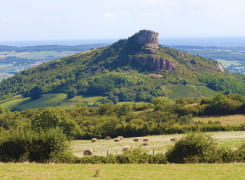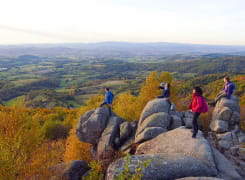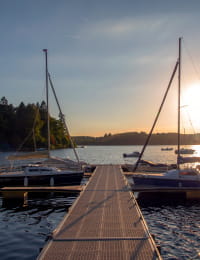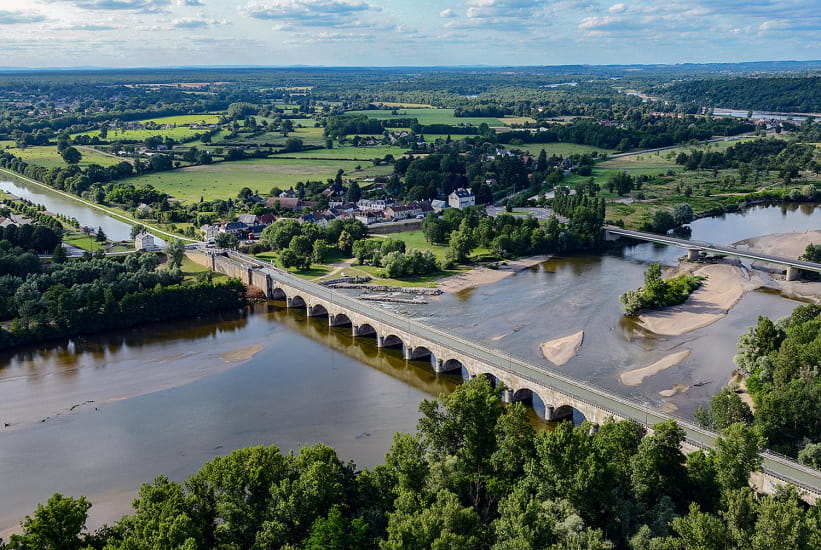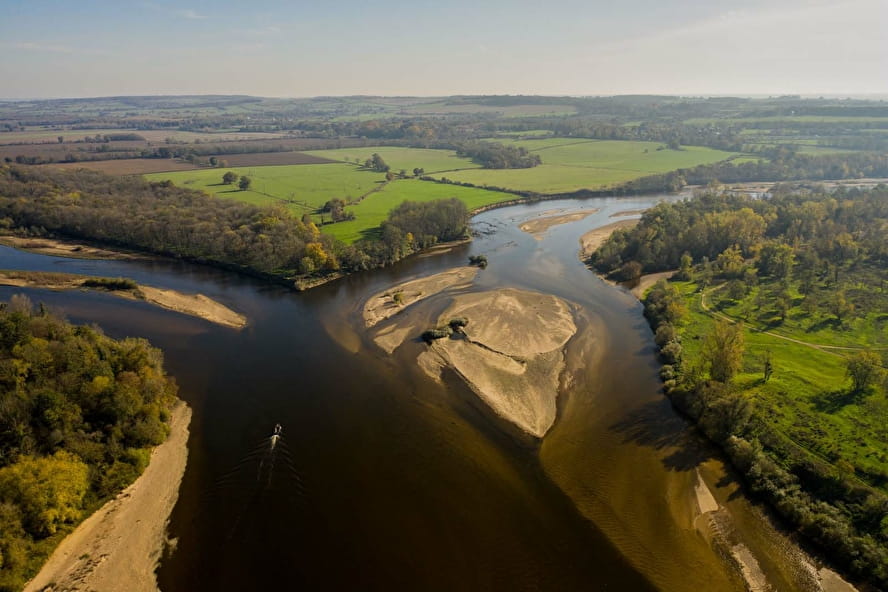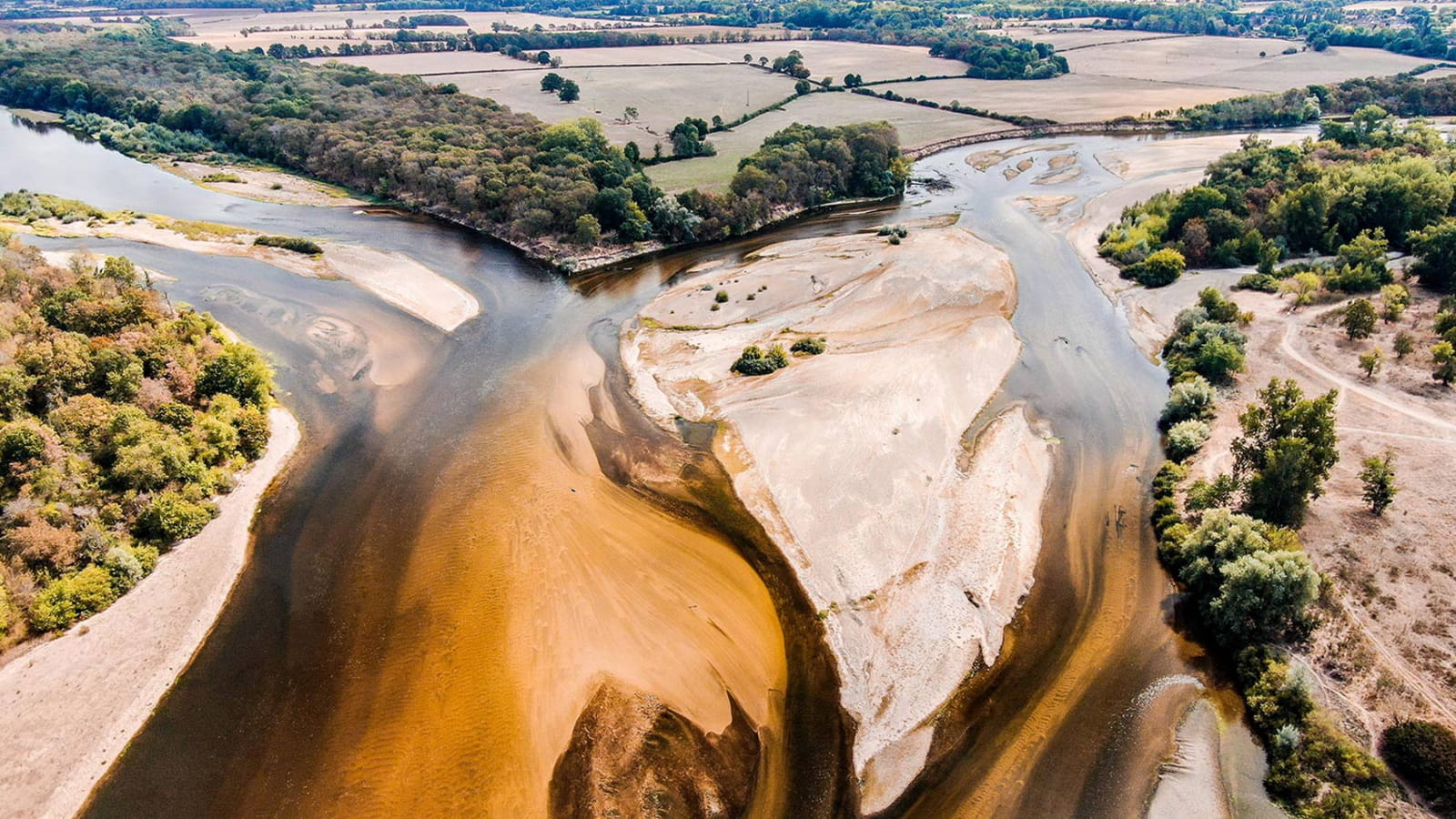
Bec d’Allier, where two rivers converge
Bec d'Allier is the meeting point of the Loire and the Allier. This is a beautiful natural phenomenon, where 2 wild rivers merge into one and create a landscape worthy of the Amazon. This natural little slice of heaven is a sanctuary for rare and fragile species of wildlife, and there are guided outings available to explore the area by boat or on foot. If you come by bike, you can cross over the Loire thanks to Guétin Aqueduct. Let's go!
Walking around Bec d'Allier
Before the Allier merges with the Loire, the water flows under an exceptional 343-metre work of art: Guétin Aqueduct. And the waters of the Loire Side Canal glide over this magnificent aqueduct. A little further downstream, the river flows into the Loire, forming the confluence known as Bec d’Allier.
This area of the Loire is paradise for beavers and migratory birds and can be explored on foot along the Sentier du Passeur
Find out more about the Sentier du Passeur trail

A natural heritage site
Guétin Aqueduct has 18 arches and spans the river Allier, allowing cyclists on the Eurovélo 6 cycle route and recreational boaters to cross the river.
Downstream, the confluence of the rivers creates a refuge for a great number of animals. Unique scenery stretches all around: sand banks, freshwater swamp forest, meadows, heathland, etc. This area has been classified by the WWF (World Wildlife Fund).


The Loire
Come and see the natural wealth of the Loire aboard a "toue" (traditional boat on the Loire) driven by a passionate guide, or along a footpath that was developed in partnership with the WWF.

Outing accompanied by a nature guide
Christophe Page, a passionate nature guide, will take you on a traditional boat down the Loire. On the programme: see the beavers working hard on their dams and watch the nesting or migratory birds in their winter destination.

A Ducal town in shades of blue
Nevers is a "Ville d'Art et d'Histoire" (Town of Art and History) on the Loire. In the 16th century, it was the capital of faience (glazed pottery) and became known for the unique shades of blue throughout the town.
Other unmissable natural sites in Burgundy
